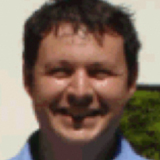
Sasa Mladenovic
Work place: Faculty of Science, University of Split, Split, 21000, Croatia
E-mail: smladen@pmfst.hr
Website:
Research Interests: Programming Language Theory, Generic and Metaprogramming
Biography
Saša Mladenović is vice dean for education at the Faculty of Science, University of Split (Croatia). He teaches some doctoral, graduate and undergraduate courses at the Department of Informatics. He received his Ph.D. in computer science at the Faculty of Electrical Engineering, Mechanical Engineering and Naval Architecture in Split (FESB). From 1999 to 2006 he was acting as Technical manager of the Toll collection system department of Ecsat, Croatia – the company responsible for software development of CS group Designer, Integrator, and operator of mission-critical systems, France. His research interests include problems in teaching programming, interoperability, intelligent technologies like ontology and multi-agent systems, especially engineering applications of intelligent technologies. He has authored or co-authored more than thirty scientific papers. He is IEEE member since 1996.
Author Articles
Cognitive Agents and Learning Problems
By Goran Zaharija Sasa Mladenovic Stefan Dunic
DOI: https://doi.org/10.5815/ijisa.2017.03.01, Pub. Date: 8 Mar. 2017
Goals, Operators, Methods, and Selection rules (GOMS) model is a widely recognised concept in Human-Computer Interaction (HCI). Since the initial idea, several GOMS techniques were developed that were used for analysis, differing in their form defined by the logical structure and prediction power. Through defined operators and methods and following the certain rules, the user can reach a specific goal. This work represents an effort to apply GOMS method in the field of artificial intelligence, specifically on a state-space search problems. Card, Morgan, Newman GOMS (CMN-GOMS) model has been chosen, since it represents ground-floor of the GOMS idea that solves the given task through a sequence of operators. Compared with the informed search algorithms for solving the given task, CMN-GOMS model gave better results. Moreover, it was shown that this model could be used in any other space motion problem in the natural environment. LEGO® MINDSTORMS® EV3 robot was used to demonstrate the application of GOMS model in real world pathfinding problems and as a test-bed for comparing proposed model with well-known search algorithms.
[...] Read more.Comparing Elementary Students’ Programming Success based on Programming Environment
By Monika Mladenovic Marko Rosic Sasa Mladenovic
DOI: https://doi.org/10.5815/ijmecs.2016.08.01, Pub. Date: 8 Aug. 2016
In the Republic of Croatia Informatics is an elective course in elementary school for students from 5th to 8th grade. When it comes to programming language teachers can choose between BASIC and Logo. There are a lot of new programming environments for learning and teaching programming like Scratch and also new ways of teaching programming like game based learning. This study compares attitudinal and learning outcomes of 7th-grade students programming in Logo and Scratch. The classes were normal classes, non-extracurricular activities. The questionnaire is used to measure the attitude towards programming and programming languages. The test is constructed to measure learned programming concepts in both compared programming languages Logo and Scratch. Results showed that learning Scratch first can provide a better understanding of basic programming concept for novices in elementary school than Logo.
[...] Read more.Other Articles
Subscribe to receive issue release notifications and newsletters from MECS Press journals